

Table of contents
- Shade trees from B to K
- Shade trees from L to Z
If you still have a shady spot on the north side of your house, or still have room under a very large tree a smaller grove can be happy, because there are enough trees and groves that are also in the shade grow. Nevertheless, a dark location can affect growth and eventual flowering. The list provides information about shade-tolerant trees and shrubs.
Shade trees from B to K
Berberis
The Berberis is particularly popular as a closely spaced hedge plant. Due to its tolerance for shade, it is also the ideal tree for any shady location as a solitary plant. Barberries also have the following properties:
- well tolerated by cuts
- can also be kept small
- Flowering between May and June
- berries develop from this
- very soil tolerant
- urban climate festival
Tip:
Many types of barberries are known, which also differ greatly in appearance. Trees with red or yellow leaves are also available, as is the most well-known, the common barberry.
boxwood

The evergreen boxwood is a small tree that usually grows to a height of one meter. It can grow up to one and a half meters in width. So it is well suited as a wind and privacy screen, for example near the terrace. Since it tolerates shade well but also tolerates sun, it can be cultivated in any location. It also has the following properties:
- slow growing
- easy-care
- is often used as a bed edging
- also often used as grave planting
- bright bloom in spring
rowan
The mountain ash is also known as the rowan tree and belongs to the Rosaceae family. When cultivated as a solitary tree, the tree can reach a height of between three and twelve metres. The shade-tolerant mountain ash has the following additional properties:
- leaves pinnate
- yellow to red autumn colour
- deciduous in winter
- white flowers in May and June
- this is where the berries develop in autumn
- not edible but non-toxic
- popular tree with birds
- good soil tolerance
- requires large amounts of water
Tip:
The rowanberry is the ideal tree for anyone who is looking for a tree for the shade in the garden that is easy to care for and adaptable.
service pear

The common or service pear is enjoying increasing popularity, especially in gardens that are close to nature. With the shade-tolerant wood, beautiful accents can also be set in a rather unattractive location. Because the pear has the following properties:
- white flower clusters in spring
- black fruits in July
- edible
- densely branched and upright growing
- red leaves in autumn
- deciduous in winter
- Height between one and a half and three meters
- Width between two and three meters
- Soil requirements low
Tip:
The pear pear is particularly suitable for gardens where snacking is allowed. Due to the fact that the fruit can be eaten directly from the tree, it is also suitable for families with children.
elder
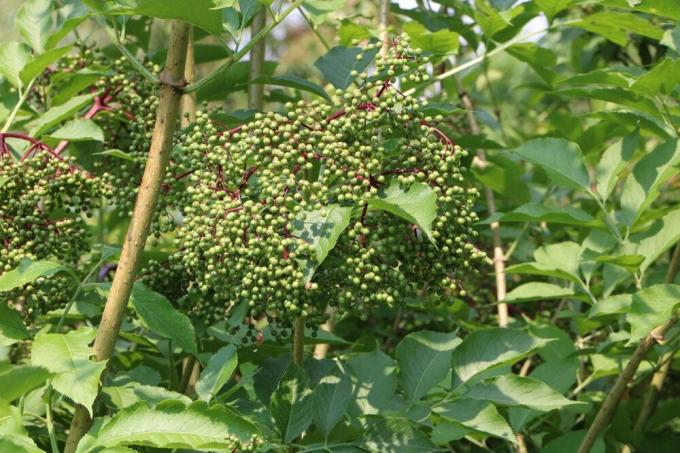
Already in ancient times the elder was valued in the gardens. It can still be found in many cottage gardens today. In addition, the flowers and fruits of the tree are very versatile. The elder tolerates shade well, but can also tolerate sun and is therefore suitable for almost any location in the garden. It has the following additional properties:
- white, small flowers on petals in early summer
- edible
- Fruit clusters develop in late summer
- small black berries
- prefers moist loamy soils
- Cut regularly for a good harvest
- Crown branches at a meter height
Tip:
Blossoms and fruits are not only edible, they are also highly recommended for the medicine chest in many ways, as they are said to have many good healing properties.
cherry laurel
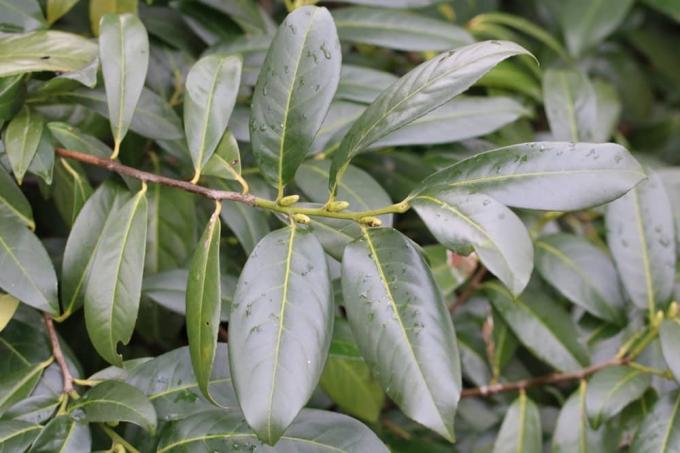
The cherry laurel can reach a height of up to three meters and a width of up to one and a half meters if it is given enough space as a solitaire. It is often planted next to a terrace as a wind or privacy screen. Here it can also be shady for the cherry laurel. The other properties of the easy-care plant are as follows:
- no loss of appearance in the shade
- adaptable and undemanding
- fresh appearance due to grass-green leaves
- flowering in May
- white flowers on erect racemes
- evergreen
- Color accent for a dreary conservatory
- well tolerated by cuts
cornel
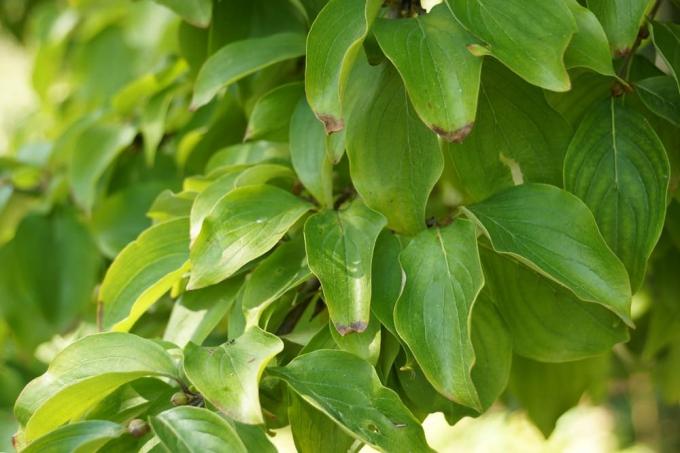
If you only have little space in the shade, you can also opt for the relatively small cornelian cherry. The tree grows up to half a meter high, but can be up to three meters wide. The shade-tolerant tree shows itself in many different colors throughout the year:
- golden flowers in spring
- later in August red fruits
- these become dark black-red over time
- are then edible
- green leaves
- turn red-orange in autumn
- deciduous in winter
Shade trees from L to Z
liguster
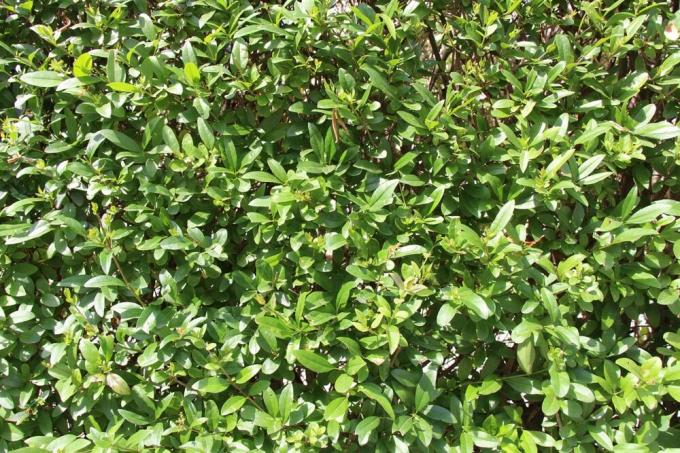
The privet is considered to be very robust and undemanding, and it gets along very well in almost any location, including a shady one. The shade tree grows between two and a half and five meters high and is well suited as a solitaire. Above all, the privet has the other positive properties:
- well tolerated by cuts
- high growth rate of 15 to 30 cm per year
- ovate, mid-green leaves
- Leaves are not replaced until spring
- wintergreen
- white flower spikes in spring
- shiny, black berries in summer
- bird food
- good nesting opportunities for birds due to leaf density
plane
The plane tree can grow up to thirty meters high, which is why it is usually used for streets and parks in the local latitudes. Nevertheless, it can also find its place in a shady place, for example on the north side of a house. However, the trunk is relatively short here, so that the branches can be cut back when the tree has grown too tall. Otherwise, the plane tree has the following properties:
- Flowering in early May
- Buds are already appearing on the leafless tree over the winter
- male flowers very small and yellow-greenish
- female flowers carmine
- fruits form in autumn and remain on the tree over the winter
- inedible
- Deep roots, therefore deep, sandy to loamy soil
Tip:
Of course, the plane tree can only be used to a limited extent for a garden. However, if you have a lot of space, you can cultivate the decorative tree.
buckeye
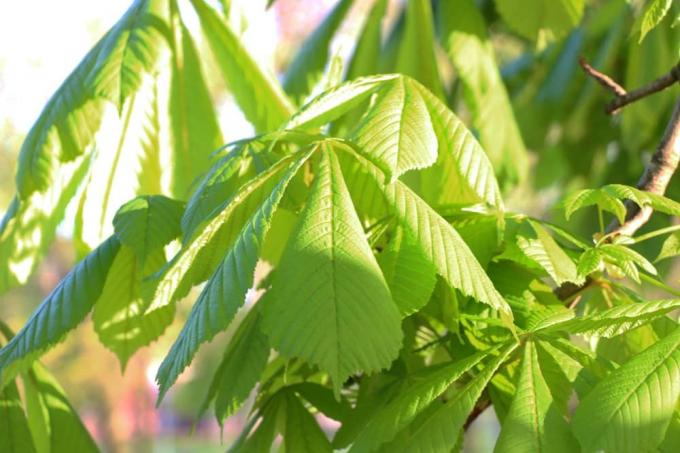
Every hobby gardener knows the horse chestnut from their childhood because of their reddish, round fruits. The tree can grow up to thirty meters high and is therefore only partially suitable for a garden. Nevertheless, it is well suited for the shade on a north side of the house. The horse chestnut has the following properties:
- reddish-brown fruits
- inedible
- in the shade the fruits are smaller
- reacts sensitively to road salt in winter
- choose deep and well-drained soil
- can also be cultivated as a bonsai
- well tolerated by cuts
Tip:
The horse chestnut is not necessarily recommended for a garden either. If you plant a small tree, you have to decide on the expected size in terms of height and size at the time of planting Be absolutely aware of the circumference of the crown and therefore do not place the tree in close proximity to a house or wall plant.
daphne
Known for its early flowering is the daphne. It belongs to the genus Daphne, which translates from Greek as laurel. But not every species is suitable for using the leaves in the kitchen. The tree has an upright habit and does not grow taller than two meters even when old. The daphne has other properties as follows:
- Flowers in spring to early summer
- white or pink flowers
- often exude an intense fragrance
- red stone fruits are ripe in June
- unfortunately not edible as highly poisonous
- Be careful with small children in the household
- are very attractive to them
- few fruits can be deadly
- fresh, well-aerated soil
- cut only a little
Tip:
The rosemary daphne variety is also very well suited for a rock garden, where it can also stand in the sun, but a little shade is also pleasant here.
bird cherry
The bird cherry is an ornamental cherry whose fruits are usually not edible. Nevertheless, it offers an attractive eye-catcher in the garden and can also be cultivated in a shady location. As a tree, the bird cherry reaches a height of up to fifteen meters over time. Above all, caution is required here, as the tree likes to multiply in the wild. Therefore, it must be pruned regularly. The bird cherry also has the following properties:
- forms underground runner roots
- however, install a rhizome barrier directly when planting
- particularly good for bees due to its pollen and nectar value
- in spring white panicles of flowers with a strong fragrance
- Fruits are pea-sized and poisonous
- However, they are used for jam, schnapps or flavoring
- need moist ground
- often stands in the undergrowth in the wild
witch hazel
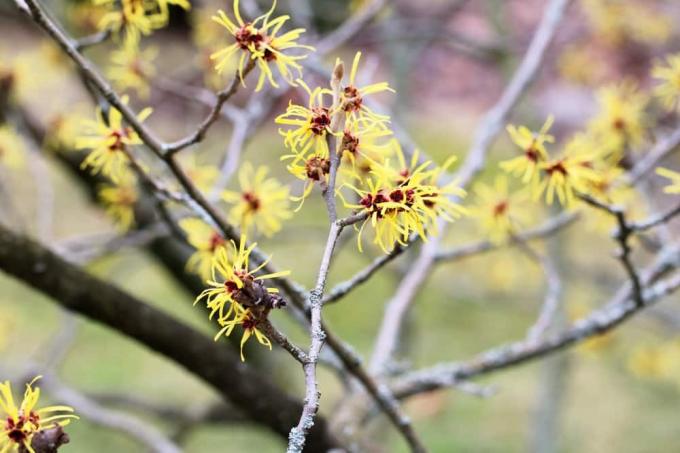
The witch hazel is also known to many under the name witch hazel, especially from creams and ointments. Due to its relatively small size of three meters, the shade tree is also well suited for small gardens and can find a sunny as well as a shady location. Here it becomes a decorative eye-catcher in the dreary winter garden, as it is a winter bloomer. In addition, the witch hazel has the following properties:
- bright orange flowers
- thready
- exude a pleasant scent
- blooms between January and February
- protect against severe frost and snowfall
- the green leaves turn yellow to orange in autumn
- deciduous
- the fruit capsules ripen in late autumn
- the demands on the floor are high
Tip:
The witch hazel is quite undemanding in terms of care, the tree hardly needs any pruning at all. Only slight corrections are recommended here.
cotoneaster
The cotoneaster has many uses in the local gardens and can be cultivated as ground cover, as a hedge or as a tree up to a height of fifteen metres. If it is cultivated in a shady location, then often not so many flowers appear. Otherwise, the cotoneaster has the following properties:
- regular garden soil is ideal
- a decorative eye-catcher all year round
- flowering time in spring
- pink or white racemose inflorescences
- showy fruits in summer
- reminiscent of red apples
- colorful foliage in autumn
- does not require fertilization
- cut evergreen cotoneasters
- no pruning necessary with leaf catchers
 garden editorial
garden editorial I write about everything that interests me in my garden.
Learn more about Baumlexikon
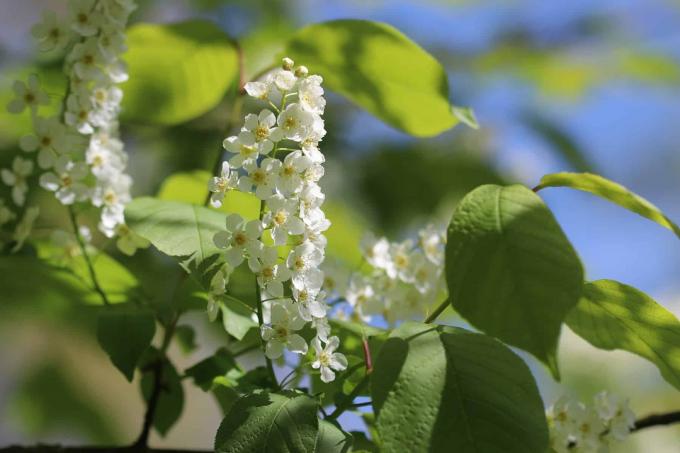
Bird cherry, Prunus padus: caring for, pruning & propagating
The bird cherry is a shrub or tree that is the ideal bee pasture in a natural garden. However, the plant should also be viewed with caution, as it is a poisonous plant for horses. Nevertheless, it is popular in the local colorful hedges.
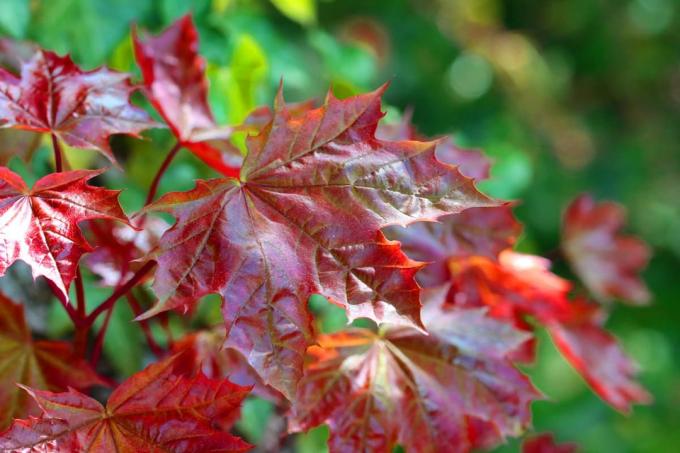
Red maple: 9 tips for caring for, cutting & overwintering
The red maple is one of the most impressive trees in Germany due to its unusual scarlet leaf colour. Here you can find out how to integrate this impressive plant into your garden and how to keep it healthy and vigorous.

Sycamore tree: Properly care for and cut sycamore trees
The plane tree (Platanus) has a high decorative value. In terms of care, it is mostly undemanding, which is why it is often chosen as a street tree. Nevertheless, there are a few details to be observed when it comes to care, as described in the home garden guide.

Birch locations: 5 important criteria
Birch trees are extremely frugal trees and are particularly eye-catching and decorative thanks to their light-colored bark. When choosing a location, however, a few factors should be considered in order to create optimal conditions for their growth and to protect the environment.

Cutting dwarf pine - instructions for the perfect cut
Dwarf pines can be pruned by thinning out, topiary or limbing. A bonsai design with needle and root pruning is also possible. So that the wood does not look unattractive after the pruning measure, a few rules of technology should be observed.

Is the vinegar tree poisonous? | Who is it dangerous for?
In ornamental gardens, the vinegar tree is an attractive eye-catcher due to its unusual flowers and the appealing autumn color of its feathered leaves. The red, upright fruit cobs (flowers) are responsible for the striking appearance. Despite everything, the vinegar tree is not an unproblematic tree.
